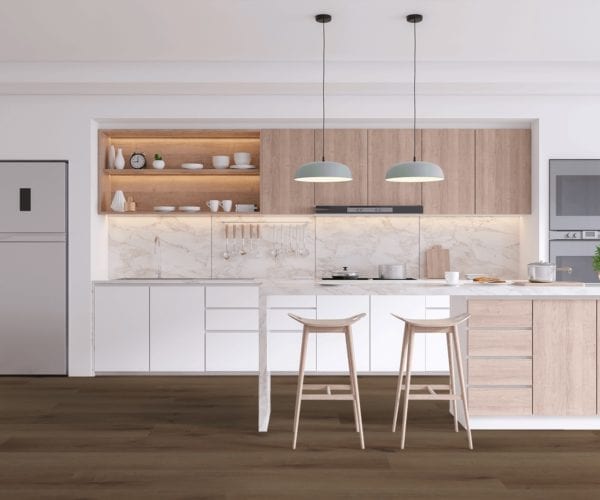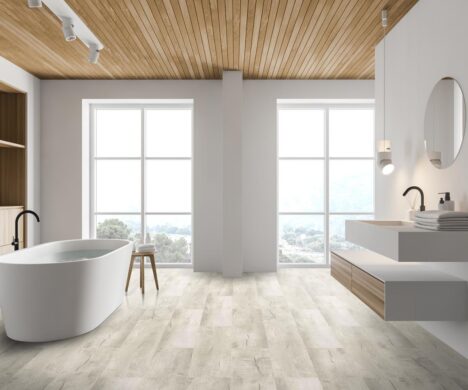Top Carpets: What to Do About Water Damage on Vinyl Flooring?
The number one enemy that most floors cannot withstand is moisture. Water can cause endless problems for certain kinds of floors – especially those that contain wood. Here are five things you need to do should you spot water damage on your vinyl flooring!
Wood is porous and absorbent and will draw in moisture. This can cause it to swell and warp out of shape. Luxury vinyl tiles (LVTs) are a popular flooring solution as many of these options are completely waterproof. This makes them an excellent addition to areas of the home where more moisture and humidity are found. This includes kitchens, bathrooms, laundry rooms and sculleries. Unfortunately, most water damage on vinyl flooring comes from beneath the floor and spotting the signs almost always happens too late.
Know the Signs and Assess the Severity
LVTs are synthetic floors that are not made with any real wood. They, therefore, do not draw moisture in the same way wood does. It is possible to soak LVT planks in a liquid for days without seeing any real change to the actual planks. Moisture can still seep up from beneath the planks, unfortunately, and this may lead to issues. There are a few signs of water damage to vinyl flooring to watch out for. These include:
- Deterioration of the adhesives used in LVTs that are glued down when installed. When these adhesives stop working, the planks themselves may move, start lifting at the edges or splitting at the seams.
- Bumps, bubbling, or ridges. This may form underneath the planks, indicating water damage on your vinyl flooring. These are not always easily visible, especially with a wood grain print that hides these flaws. If you suspect water damage, try running your hands over the planks to feel for any changes in the surface area.
- Staining and discolouration as a result of moisture. Vinyl flooring is incredibly stain-resistant, and small stains usually clean up quite easily – so spotting larger stains that are difficult to remove makes it likely that water damage has occurred from beneath the plank.
- The formation of mould or mildew. Dark and damp areas make it easy for mould to grow and spread. The presence of mould on your floors is a key indicator that moisture exposure has occurred over time. Sometimes this mould is still under the planks. The only sign of its presence may be a musty, earthy smell in the room. Certain dark spots and stains can also be an indication of mould.
Get to the Root of the Issue
Often, moisture that damages vinyl flooring comes from concrete slabs that are not properly cured before installation. Many property owners, however, ensure to properly prepare their substrate before an LVT installation. This preparation entails damp-proofing. Furthermore, this adds moisture barriers that keep water damage at bay. Several issues may still contribute to a future issue. This includes:
- Problems within the home’s plumbing. This could be a leaking pipe or blocked drain that overflows.
- Washing machines and dishwashers may have a slow leak that causes moisture build-up over time.
- Moisture that comes up from the crawlspace underneath the floors.
- Once you discover water damage on your vinyl flooring, your top priority will be to call a plumber and assess whether you have any leaks or plumbing issues. Your next step will be to consider the substrate floor and whether this was properly prepared before installation occurred.
Remove the Planks and Dry the Area
To prevent the formation and spread of mould, you will need to get the area as dry as possible. If the planks are not glued down, it should be easy to remove them and assess where the most moisture is located. You can also set up fans and dehumidifiers in the area to dry out the room as much as possible and draw the moisture out of the substrate floor. If you are afraid of damaging your installation because it is glued down, then it is best to call in a professional as soon as possible.
Call Your Preferred Installer
Contacting your original installer, or an installer familiar with water damage on vinyl flooring is always a better idea than handling the issue on your own. They will not only know how to possibly salvage your installation, but they can test the substrate floor’s moisture levels too. If the water damage on the vinyl flooring is too severe to keep most of the planks, you may need a new installation, with which your installer and preferred LVT supplier will assist you.
Never Ignore the Signs
Water damage rarely resolves on its own; there is generally a cause that will result in more damage the longer it is left. Failure to find this cause might harm more than your vinyl flooring too – it can affect furniture and result in rising dampness that damages walls and skirtings. Furthermore, mould and mildew that spread can also be dangerous for one’s health. In the end, it is better for both one’s wallet and well-being to sort the issue out as soon as possible.
At Top Carpets and Floors, installation services will ensure a moisture-free substrate and a top-tier LVT solution perfectly suited to your needs. For advice on any of their products or your current flooring solution, be sure to contact Top Carpets and Floors.
2 Comments
Leave a comment/Ask a question
You might also like...
-
Cosentino announces Dekton Ukiyo

Cosentino announces Dekton Ukiyo – a first-of-its-kind fluted collection Known for its smart and sustainable surfaces that combine beauty and practicality, Cosentino is breaking design ...
-
Entertainment Oasis: Transforming Outdoor Spaces with 2024’s Hottest Tile Trends with Stiles Tiles.

As outdoor living spaces seamlessly merge with our homes, we’re gearing up to make a lasting impression in 2024. This year, tiles are taking center ...
-
Bring Colour Trends into Your Home with Tile Africa

As we step into a new year, the perfect opportunity arises to revitalise our living spaces with a fresh burst of energy and style. This ...
-
Italtile: Sustainability & Innovative Materials

Sustainability is front and centre in any conversation in the architectural field, the construction world and the design-for-living space. Italtile takes the topic quite seriously, ...






























Shiona Smuts
July 23, 2022I would like a quote for a house in Silverlea Village in Fish Hoek please.
Marcia
October 10, 2022Hi Shiona,
this is just a service email. did you hear back from Topcarpets and did you get sorted?
thanks
ian